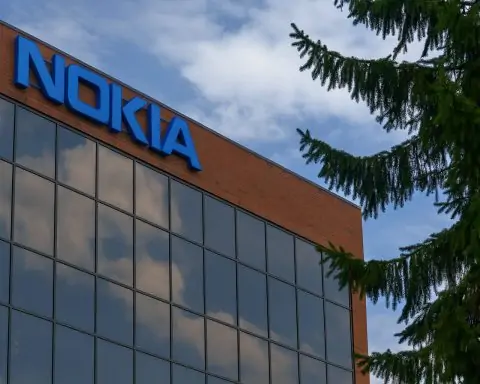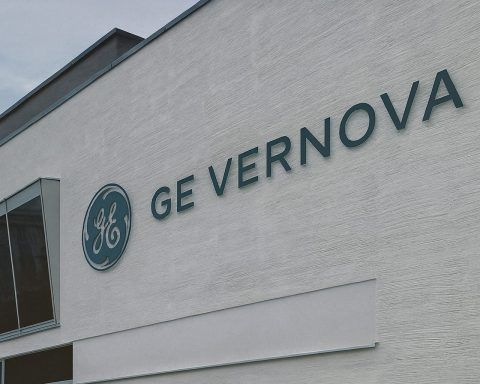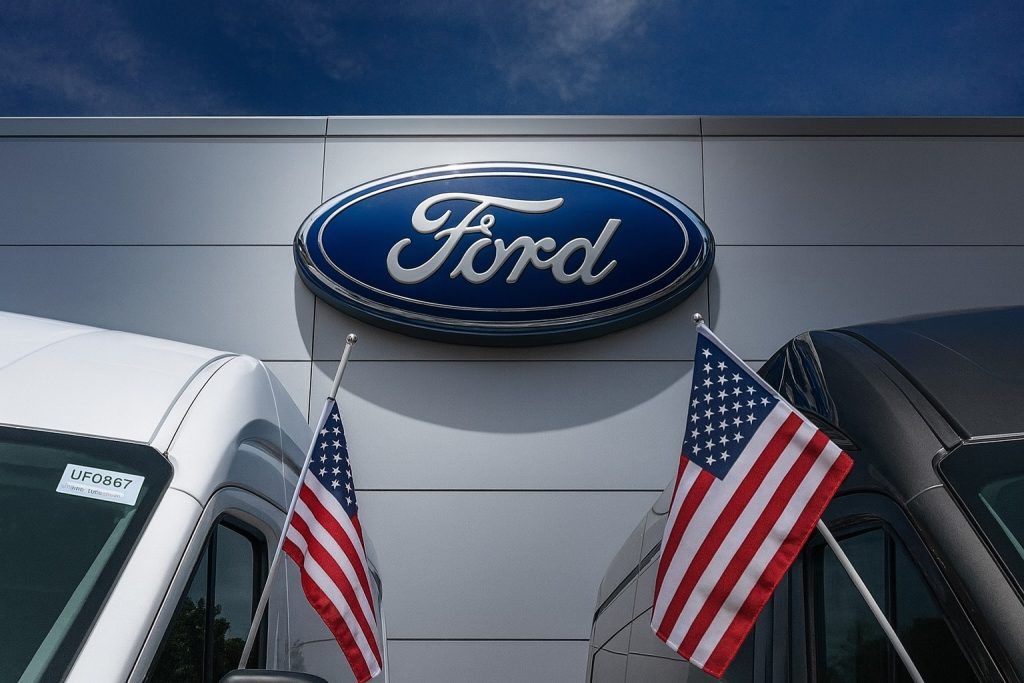- U.S. Backs Alaskan Miner: Trilogy Metals’ share price soared over 200% (to ~$6.5) in a single day after the U.S. government announced a $35.6 million investment for a ~10% equity stake, plus warrants for an additional ~7.5% [1] [2]. This rare federal stake in a Canadian mining firm is part of Washington’s drive to secure “critical minerals” and reduce reliance on China [3].
- Trump Greenlights Ambler Road: Alongside the investment, President Trump issued an executive order to permit the long-stalled Ambler Access Road in northwest Alaska [4]. The 211-mile road would unlock the remote Upper Kobuk Mineral Projects (UKMP) – believed to hold rich deposits of copper, cobalt, zinc, gallium, germanium and more [5] – by connecting them to Alaska’s highway network. This reverses a 2024 decision that had blocked the road over environmental concerns [6].
- Critical Minerals Strategy: Officials cast the deal as strategic. “This partnership…underscores the strategic importance of [Ambler] for a secure, domestic supply of critical minerals,” said Trilogy CEO Tony Giardini [7]. U.S. Interior Secretary Doug Burgum echoed that the move “underscores Washington’s intent to secure its mineral supply chains” [8]. The Trump administration has ramped up Defense Production Act investments in key sectors – funding mines and factories for batteries, EVs and defense. Just last week, Washington took a minority stake in Lithium Americas with $435 million to advance a Nevada lithium project [9], and it’s reportedly eyeing an equity stake in Critical Metals, which controls a rare earths project in Greenland [10].
- Stock Hits Record High, Analysts Cautious: Trilogy’s U.S.-listed stock hit an all-time high (~$6.52) on the news, more than tripling from its prior ~$2 share price [11]. The rally validated Trilogy’s potential, but many analysts urge caution. The company is pre-revenue (no operating mines yet) and ended Q3 with only ~$23 million cash [12]. “Much work remains before production – and the stock could be volatile,” one analyst noted [13]. Wall Street coverage is sparse, with a consensus Hold rating and average 12-month target around C$2.38 (≈US$1.80) [14] – far below the post-spike price – though some see upside to ~$3. BMO Capital initiated Trilogy at Outperform (C$2.25 target) in September [15]. Experts view the government’s backing as a game-changer that reduces political risk, but warn that permitting, funding and construction hurdles remainbefore Ambler’s minerals can be mined [16] [17].
Stock Skyrockets on U.S. Government Deal
Trilogy Metals Inc. (NYSEAMERICAN/TSX: TMQ) stunned investors with a historic one-day surge after news broke that the U.S. federal government will take an ownership stake. In Tuesday’s trading, Trilogy’s stock rocketed over 210% to around $6.50 – up from just $2 the day before – marking a record high for the Vancouver-based junior miner [18]. The dramatic jump followed an October 6 announcement (after market close) that Washington will invest $35.6 million in the company for approximately 10% equity. The deal, structured as a private placement, involves the U.S. purchasing 8.2 million units at $2.17 each (one common share plus 3/4 of a warrant per unit) [19] [20]. In addition, the government will receive warrants and options enabling it to boost its holding by another ~7.5% of shares in the future (at a nominal exercise price of $0.01) upon completion of the Ambler mining road [21]. This implies the U.S. could ultimately own 17.5% of Trilogy Metals if the project progresses [22].
Crucially, the investment isn’t just a financial vote of confidence – it cements a strategic partnership. The U.S. Department of Defense (oddly referred to as the historic “Department of War” in company filings [23]) will also gain the right to appoint a board director at Trilogy and has attached conditions to ensure the funds advance the project. Half of the $35.6 million will flow through to Ambler Metals LLC, the 50-50 joint venture between Trilogy and Australian miner South32 Ltd. that owns the Alaskan projects [24]. (South32 will receive $17.8 million for a portion of its Trilogy shares sold to the U.S., with all proceeds reinvested into the Ambler JV [25].) Trilogy’s CEO Tony Giardini hailed the federal backing as a “significant milestone for the development of a secure, domestic supply of critical minerals for America” [26]. The official U.S. stake will be ~10%, and an independent director designated by the government will sit on Trilogy’s board for at least three years [27].
Market reaction to this unprecedented deal was swift and extreme. Traders piled into TMQ stock, essentially repricing the company overnight on hopes that the federal government’s involvement de-risks the project. The U.S. funding came at a slight premium to market price (~$2.17 vs. ~$2.09 last close) and brings much-needed capital. Before this, Trilogy was capitalized around $350 million and its stock had already climbed ~333% in the past year from penny-stock levels [28] amid optimism for the Ambler project. However, nothing in its history compares to the after-hours frenzyand next-day gap up that this announcement triggered. U.S.-listed shares spiked over 212% to $6.52 in morning trade, while Trilogy’s Toronto-listed stock similarly jumped ~230% to C$9.68 [29]. The move puts Trilogy at valuations far above most analyst targets (as discussed later), reflecting a euphoric re-rating of its resource potential now that Washington is literally invested in its success.
U.S. Stake Rationale: Critical Minerals & National Security
Why is the U.S. government buying into a small-cap mining explorer? In a word: strategic resources. Trilogy’s copper-rich projects sit in the Ambler Mining District of Alaska – a trove of “critical minerals” vital for clean energy, electric vehicles, and defense technologies. Copper in particular is deemed strategic for the energy transition, needed for everything from EV batteries and motors to power grids and semiconductors. Analysts have warned of a looming global copper supply crunch, with demand projected to reach ~33 million tonnes by 2035, far outstripping expected supply [30]. Other elements in Ambler (like cobalt, zinc, gallium, germanium, rare earths) are on U.S. critical minerals lists due to their importance in high-tech and military applications [31]. The Ambler district’s Arctic and Bornite deposits rank among the most significant undeveloped copper and polymetallic resources in North America, containing high-grade copper along with by-product metals (zinc, lead, cobalt, silver, gold, and potentially gallium/germanium) [32] [33].
The Trilogy Metals deal is part of a broader U.S. strategy to shore up domestic supply chains for these materials. President Trump has made critical mineral independence a policy pillar in his second term. Reuters notes the U.S. government has been taking equity stakes in industries deemed essential to national security, from semiconductors to battery metals [34]. In recent months, Washington has deployed Defense Production Act authorities and other tools to support domestic mining projects. For instance, in late September the administration acquired a minority stake in Lithium Americas (LAC), alongside $435 million in federal financing, to accelerate that company’s Thacker Pass lithium mine in Nevada [35]. Reports also indicate the U.S. may back Critical Metals Plc (NASDAQ: CRML) – which controls a rare earths site in Greenland – with a similar investment [36]. By investing directly, the government signals confidence in these projects and gains influence (board seats, warrants) to ensure the materials ultimately support U.S. needs.
Trilogy Metals’ case is especially notable because it’s a Canadian-incorporated company focusing on U.S. mineral assets. The Ambler projects are located on state and federal land in Alaska, but until now development was purely a private-sector venture between Trilogy and South32. The new federal stake ties Ambler’s success to Washington’s strategic initiatives. “The federal backing…underscores the strategic importance of the [UKMP] in supporting U.S. energy, technology, and national security priorities,” said CEO Giardini [37]. U.S. officials echoed that view. “This landmark decision is a turning point… The Ambler Road is not just a pathway to economic growth in Alaska – it’s a strategic asset for the United States,” Giardini added, emphasizing the broader significance [38] [39]. And as Interior Secretary Doug Burgum (formerly North Dakota’s governor) put it, the deal “underscores Washington’s intent to secure its mineral supply chains.” [40] In short, backing Trilogy is meant to ensure American access to a domestic source of copper and other vital minerals, reducing future dependence on imports from geopolitical rivals.
Beyond funding, the government’s involvement may smooth regulatory and logistical challenges for Trilogy. The agreement explicitly links to efforts to advance permitting and infrastructure: it includes a pledge to work in good faith on a framework to permit and finance the Ambler Access Road [41]. The Department of Defense (through its Office of Strategic Capital) will coordinate with Alaska’s state authorities on road financing and even help fast-track mine permitting via the federal FAST-41 process [42]. This kind of political muscle could greatly expedite a project that otherwise faces lengthy reviews. RBC Capital Markets analysts noted that “the federal backing and executive orders reduce political and regulatory uncertainty around the road/access for the Ambler Project…clearing a major hurdle and raising the likelihood of Ambler’s development” [43]. In their view, having Washington on board boosts the project’s “option value” – essentially the chance that these remote mineral deposits actually get mined in a reasonable timeframe [44].
Ambler Mining District: Unlocking a “Treasure Trove” in Alaska
Trilogy’s fortunes hinge on Alaska’s Ambler Mining District, a remote region in the Brooks Range estimated to contain a treasure trove of base and precious metals. The company’s flagship Arctic deposit is a high-grade volcanogenic massive sulfide (VMS) deposit with rich concentrations of copper and zinc (plus lead, gold, and silver). Nearby lies the Bornite deposit, a large sediment-hosted copper resource with significant cobalt content. Together, these deposits – part of the Upper Kobuk Mineral Projects (UKMP) – could support multi-decade mining operations supplying metals for the clean energy and defense sectors [45]. However, the Achilles’ heel has always been location: the Ambler deposits are deep in Alaska’s interior, over 200 miles from the nearest road or rail.
For decades, development was stymied by the lack of infrastructure. The proposed solution, in the works since the 2000s, is the Ambler Access Road – a 211-mile industrial-use road stretching west from the Dalton Highway (the pipeline road) to the Ambler region [46]. This private road (to be controlled by Alaska’s state development authority AIDEA) would allow trucking in equipment and hauling out ore concentrates to world markets. Under the Trump Administration’s renewed focus on domestic mining, the Ambler Road is now seen as “critical to unlocking access to vast deposits of copper, cobalt, zinc and lead” in northwest Alaska [47]. With road access, the Arctic mine project could move forward with construction, and other prospects in the district would become viable to explore and develop.
That’s why the news of Trump’s executive order on Ambler Road is almost as significant as the investment in Trilogy itself. On October 6, President Trump invoked his authority under Section 1106 of ANILCA to overturn the previous “no action” decision that had halted the road [48]. In essence, he reinstated key federal permits for the road and directed agencies to finalize any remaining authorizations needed for construction [49]. This reversed a 2024 Biden Administration decision that had suspended the project due to environmental and subsistence concerns [50]. Alaska officials – including Interior Secretary Burgum – applauded the move, with Burgum stating the road “opens up a wealth of resources” for development [51]. The ambivalent stance of prior authorities has now shifted to full-throated federal support: the White House even listed Ambler Road as a national strategic priorityearlier in 2025 [52].
For Trilogy Metals, the road approval is an essential breakthrough. Without it, the UKMP assets were effectively stranded. Now, assuming the order withstands any legal challenges, the company and its JV partner South32 can proceed with detailed engineering, feasibility studies, and eventually mine construction once permits are in hand. The federal investment will fund ongoing exploration and environmental baseline work in the interim [53]. It’s worth noting that South32, a major diversified miner, had previously slowed spending on Ambler amid permitting uncertainty. The U.S. stake and road decision could reinvigorate South32’s commitment as well – evidenced by a ~6% jump in South32’s stock in Australia after the news [54]. All told, Ambler’s vast mineral potential may finally be within reach thanks to this one-two punch of money and political will.
Environmental and Regulatory Hurdles Remain
While the U.S. government’s backing clears a big roadblock, significant challenges remain before Trilogy Metals can actually dig copper out of the ground. Chief among them are the environmental and community opposition to the Ambler Road and mining development in this pristine region. The Ambler road would cut through undeveloped wilderness and the traditional territories of Alaska Native villages. Conservation groups and local tribes have long fought the project, arguing the road and ensuing mining could disrupt caribou migration, harm fish and wildlife, and upset subsistence hunting and fishing on ancestral lands [55] [56]. The Biden administration’s 2024 cancellation of the road was largely driven by these concerns – a review found potential threats to the Western Arctic caribou herd and to rivers that native communities rely on for fish [57].
Those concerns have not vanished. Environmental organizations are expected to challenge Trump’s order and any new permits in court, citing inadequate consultation and environmental review. Litigation or even a future policy reversal could still delay or derail the road. The Trump Administration says it will mitigate impacts – reportedly, the new executive order mandates measures like caribou crossings (culverts) and other protections along the road [58]. However, skeptics doubt that will fully address the scale of impact, given the road’s length and the mining traffic it will carry. “Local tribes and environmental groups strongly oppose [Ambler Road], warning it would disrupt caribou migration and subsistence lifestyles in the region,” Alaska’s public media reported when the Biden “no build” decision came down [59].
Regulatory hurdles beyond the road also exist. Even with access, Trilogy must obtain numerous mine permits (for water use, waste management, etc.), navigate federal and state environmental reviews, and ensure compliance with Alaska’s stringent standards. The mention of FAST-41 (a federal fast-track permitting program) in the investment agreement suggests the government will try to accelerate this, but permitting large mines is still a multi-year process. Analysts at RBC caution that while political support helps, “timing for permits, challenges and first production is still unclear” [60]. In other words, production at Ambler is not imminent – it could be late this decade, at best, before any copper is produced, assuming the road is built by 2028 and mine construction follows.
Financing the full project development is another consideration. The $35.6 million injection is significant for an explorer like Trilogy (which had ~$23 million cash on hand before the deal [61]), but developing the Arctic mine and road will cost on the order of hundreds of millions if not billions of dollars. Trilogy and South32 would likely need to raise capital via additional equity, debt, or find a larger mining partner to fund construction. The federal involvement hints that public funding or loan guarantees might be available down the line (the Department of Defense even signaled willingness to help facilitate road financing with the State of Alaska [62]). Still, investors must recognize that Trilogy Metals is not yet a revenue-generating company – it’s essentially a speculative play on future commodity production. As the company’s filings note, it has no operating mines or cash flow and incurs losses as it explores and advances studies. This makes the stock inherently volatile and sensitive to news, as the recent rollercoaster demonstrates.
Market Outlook: Opportunity vs. Hype
The stunning rally in Trilogy’s stock price raises the question: Is TMQ a buy at these heights, or has it overshot reality? Market experts are divided. On one hand, the U.S. government’s stake dramatically de-risks the Ambler project’s political and financing outlook – a boon that few junior miners ever receive. The endorsement validates the quality of Trilogy’s asset base; it suggests Ambler could indeed become a world-class mine supplying critical metals to the U.S. economy. Some optimists see this as just the beginning of Trilogy’s rise, especially if copper prices climb and as mine development milestones are achieved. For example, one brokerage aggregator (TickerNerd) pegs fair value around $2.99/share (USD) [63] before this latest news – implying that even after the jump, further upside could exist if new resource discoveries or strategic partnerships add value. And notably, metal prices have been firming up: copper is trading ~40% higher than its 3-year average [64], underpinned by global electrification trends, which improves project economics for Ambler.
However, many analysts urge caution given the disconnect between the stock’s speculative surge and its long path to production. Wall Street coverage of Trilogy Metals is limited – only a couple of analysts officially cover the stock – and their consensus rating is Hold with a 12-month price target of roughly C$2.38 (about US$1.80) [65]. That target implies the stock could fall significantly from current levels, suggesting the recent news may have priced in a best-case scenario. BMO Capital Markets recently initiated coverage with an Outperform rating, yet their target was just C$2.25 [66] (around US$1.65). Such estimates were issued prior to the U.S. investment announcement, so analysts may revise upwards, but it’s clear the $6+ share price is far above where fundamentals previously supported. Even Trilogy’s management might not have anticipated such a valuation – the government is buying in at $2.17, a price that looked fair last week. A day after the spike, some traders likely took profits or short sellers moved in, betting that the stock will drift down from these euphoric levels absent further concrete developments.
It’s also instructive to see what seasoned investors in Trilogy are doing. Notably, billionaire John Paulson’s hedge fundhas been a major Trilogy shareholder (Paulson is known for investing in gold and resource plays, and is a prominent Trump ally). The government’s stake instantly boosted the value of Paulson’s holdings – Forbes reported he scored a significant windfall from the stock’s jump [67]. Whether such insiders choose to hold or sell into the rally will be telling. If big stakeholders cash out, that could exert downward pressure. On the other hand, the involvement of the U.S. could attract new institutional investors who previously shunned micro-cap miners. Trilogy’s addition to a key S&P metals & mining index in September shows its profile was already rising [68].
In summary, Trilogy Metals now straddles two narratives. One is a high-upside story: a small company sitting on a huge metals district, suddenly aligned with U.S. strategic interests at the perfect time (as a global clean-energy metals rush unfolds). The other is a high-risk reality: a long timeline to production, no guarantee of success, and likely dilution or obstacles ahead. As one investment analyst observed, Trilogy is “in the center of a critical minerals boom – but like any junior explorer, it’s a bet on future projects, not current cash flow.” [69] The federal backing certainly boosts the odds of future success, yet it does not eliminate the execution risks.
For investors, the key takeaway is that Trilogy Metals has transformed from a niche speculative play into a closely-watched test case for America’s critical minerals ambitions. The stock’s 220% eruption on U.S. support underscores how significant political risk (and its removal) can be for resource stocks. Going forward, expect the share price to remain news-driven: positive steps like final deal closure, road permit progress, or resource upgrades could lift it, while setbacks (legal challenges, delays, commodity price dips) could spark sharp corrections. In the long run, if Ambler mines do get built, Trilogy could eventually graduate into a mid-tier producer of copper and battery metals at a time the world badly needs them – potentially rewarding believers handsomely. But in the near term, caution is warranted after such a parabolic jump. As the dust settles, Trilogy Metals stands as both a symbol of a new “copper rush” fueled by government policy and a reminder that even strategic gold rushes can have wild swings before the real paydirt is dug up [70].
References
1. www.reuters.com, 2. www.reuters.com, 3. www.reuters.com, 4. www.reuters.com, 5. www.bloomberg.com, 6. www.reuters.com, 7. trilogymetals.com, 8. investingnews.com, 9. investingnews.com, 10. investingnews.com, 11. www.reuters.com, 12. ts2.tech, 13. ts2.tech, 14. ts2.tech, 15. ts2.tech, 16. www.reuters.com, 17. ts2.tech, 18. www.reuters.com, 19. trilogymetals.com, 20. trilogymetals.com, 21. trilogymetals.com, 22. www.reuters.com, 23. trilogymetals.com, 24. investingnews.com, 25. investingnews.com, 26. investingnews.com, 27. investingnews.com, 28. ts2.tech, 29. www.reuters.com, 30. ts2.tech, 31. www.bloomberg.com, 32. investingnews.com, 33. investingnews.com, 34. www.reuters.com, 35. investingnews.com, 36. investingnews.com, 37. trilogymetals.com, 38. investingnews.com, 39. investingnews.com, 40. investingnews.com, 41. trilogymetals.com, 42. trilogymetals.com, 43. www.reuters.com, 44. www.reuters.com, 45. investingnews.com, 46. trilogymetals.com, 47. investingnews.com, 48. investingnews.com, 49. investingnews.com, 50. www.reuters.com, 51. ts2.tech, 52. ts2.tech, 53. ts2.tech, 54. www.reuters.com, 55. www.reuters.com, 56. ts2.tech, 57. www.reuters.com, 58. ts2.tech, 59. ts2.tech, 60. www.reuters.com, 61. ts2.tech, 62. trilogymetals.com, 63. ts2.tech, 64. ts2.tech, 65. ts2.tech, 66. ts2.tech, 67. biztoc.com, 68. ts2.tech, 69. ts2.tech, 70. ts2.tech








